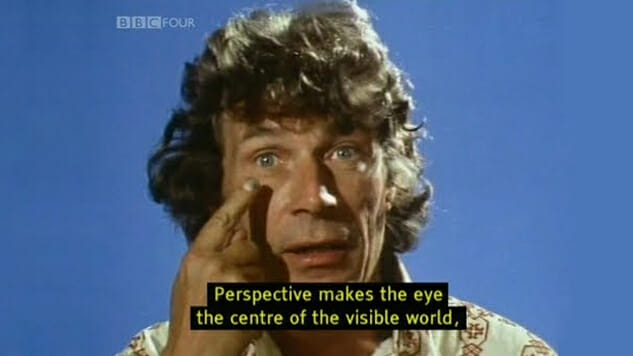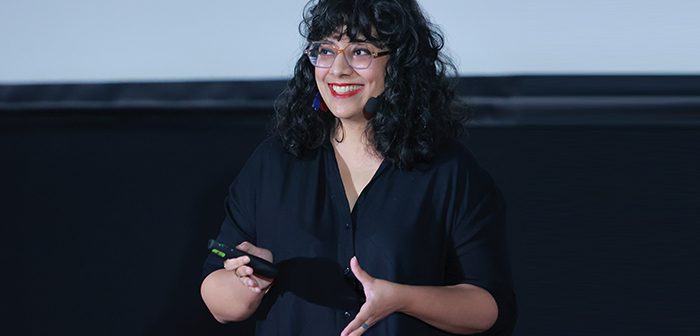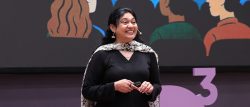Ideation and Processes is a core course in the Communication and Design program at Habib University that students take in their first semester. The main goal is to teach students to deconstruct the world around them and show them how to ideate and execute creative projects, from start to finish.
Rohama Malik, Assistant Professor in the Communication and Design program, shares her experience bringing the values of empathy and empowerment to the forefront of the core course. She draws inspiration from her undergraduate and graduate school professors and their unique pedagogical approaches, eventually introducing students to a world of ideas.
Read on to learn, as narrated by Rohama Malik, how she incorporates her learnings into the course!
Rohama Malik’s Experience
When I went to do my Masters in Illustration at the Maryland Institute College of Arts, I was struck by the environment of permissiveness and play. Fear and insecurity around one’s practice could exist in this setting, but giving into them to produce nothing, could not. My instructor, Kimberly Ellen Hall, was an immense support to me in the first year as she brought her unique brand of empathetic teaching to the classroom.
One of the first courses I taught was Ideation. People who had taught it before provided as much help as they could to ground me and the other new instructors but there was a need to address our nerves to make this course feel more teachable. For me, it meant focusing more on illustrative solutions to assignments and reflecting on my own practice and background in art. This approach had a much more effective impact on the students this time.
Another professor, Valeska Populoh, who taught puppetry courses, showed me how one could teach craft courses with empathy and care to those going in completely inexperienced. I was Valeska’s teaching intern and saw how deftly she redirected students’ insecurities into moments where they felt empowered and how that informed their practice. Kim and Valeska’s approach to pedagogy was unique and exciting to me, especially considering my own myriad of insecurities surrounding my not being a ‘real’ artist as I didn’t have the formal four-year undergrad training that I associate with art students.
Introducing Students to the Unfolding of Ideas
The reason I mention my own educational background and who I look to for pedagogical inspiration is that many of my students enter the first year of their Communication and Design (CND) program with similar sets of fears and anxieties. For many of them, this was the first time they were being asked in years, perhaps since they were children, to engage in creative pursuits but to also understand the theoretical approaches behind those decisions.
To that end, the semester began with watching John Berger’s 1972 television series, Ways of Seeing. Berger takes the viewer through the history of art, the exploitation of women as subjects in visual work, the relationship of private property to painting, and how all these things converge in modern advertising.

John Berger’s 1972 television series, Ways of Seeing, examines the impact of photography on the appreciation of art from the past. Source: artnet.com
Convincing the students to give the series their time was quite a task. They were frank in admitting that they primarily watch Instagram reels, TikToks, and YouTube shorts, and anything longer must be watched at 2x the speed to retain their interest. While some instructors may wish to engage students through short videos that would appeal to their level of attention, and that is certainly a valuable approach, it was imperative for me to introduce them to the idea of a slow unraveling of ideas that one must sit with and absorb gradually.
Contextualizing Experiences
Ideation, in the way I teach it, requires students to think critically about all the information presented to them and to see how they can relate it to their own lives and the things they see around them. This is incredibly important as most of the readings and ideas presented in the syllabus are by mostly Western writers and artists. I would frequently use whatever we were studying as a jumping off point to get them to notice what was happening at Habib University in terms of design decisions; whether it was the chairs at Tapal Cafeteria, or how the colors in Horizon affected their mood. I was pleased to see students begin to make these connections for themselves and to point out things they saw in the city in the reflective process blogs the course would ask them to write.

Students sitting at Horizon – a learning space at Habib University catered exclusively to students’ various learning styles.
Mindful Practices as Exercises
Another way I devised for the students to express themselves was by introducing a ten-minute drawing warm-up that I’ve termed meditative exercises. I took inspiration from established mindfulness practices as well as cues from games Surrealist artists played and asked students to respond to the prompt I gave them at the start of class. Students began with disliking or being fearful of these exercises but eventually most, if not all, reached a point where they looked forward to them and often came to class on time so as not to miss out.
Leveraging Student Perspectives in Creativity
Given that Ideation is a concept-heavy course, I often utilized slides to teach students the weekly topics. I made sure that the slides were aesthetically pleasing, using my own work as presentation covers and showing them a wide variety of artists, especially those from Pakistan. By showing the students my own work, I aimed to show them that their instructors in CND are also practitioners (a fact they sometimes forget) and that one can have a fulfilling artistic practice within Pakistan as well. Last semester’s students were often very expressive about their struggles and their desire to give up and I appreciated their honesty in those moments. It became clear that it was my job to help them recognize the fear and insecurity they felt, to name it, and then help them put it to the side to concentrate on doing their best.
Bringing Empathy and Gentleness to the Forefront
My favorite activity I designed was that of a wordless play students put on in groups for the Sensemaking module of the course. The aim of this activity is to demonstrate how people often think of a singular interpretation of an event when working in groups, using that interpretation when moving forward in creative projects. Often, I would construct the groups for these activities, forcing students to move away from those they were already comfortable with to see how they could work with strangers, especially when they might not see eye-to-eye.
As in all CND studio courses, students are expected to showcase their work in a critique setting. Remembering my own fear in critique settings in grad school helps me relate to students and allows me to design feedback sessions where empathy and gentleness are at the forefront, without compromising on students being able to give each other well-considered feedback.
Embracing the Art of Critique
Taking a leaf from Kim and Valeska’s book, the first critique of the semester is based on Liz Lerman’s Critical Response Process. This method gives the artist autonomy in the feedback process by allowing them to ask the audience questions while also giving structure to the respondents with prompts they need to address. I choose this as the first critique method students are introduced to so that they can feel more confident about their work and understand that critique doesn’t have to be a nerve-wracking experience. Students have told me how much they enjoyed this form of critique as it allows the shyer members of class to express themselves openly.
Thus, by keeping in mind the pedagogical techniques introduced to me in grad school, trying to empower students to develop their own perspectives and work collaboratively, and to not let fear get the best of them, I had a wonderful time teaching Ideation and Processes.
Habib University’s Dedication to Pedagogical Innovation
Rohama Malik’s inspiration to bring empowerment and empathy to the heart of her teaching is one example of how Habib’s faculty is innovating pedagogy to enhance student learning and experiences. Habib University, the best university in Pakistan for undergraduate education, places a strong emphasis on teaching excellence, celebrating a new course with the same appeal that academia traditionally reserves for research. At a time when global challenges require innovative educational approaches, the university recognizes that inspiring pedagogy is crucial for preparing students to navigate and address complex issues.
Rohama Malik is the recipient of Habib University’s Teaching Excellence Award that is granted by the Office of Teaching and Learning, recognizing outstanding faculty who have exemplified excellence in their teaching endeavors.




